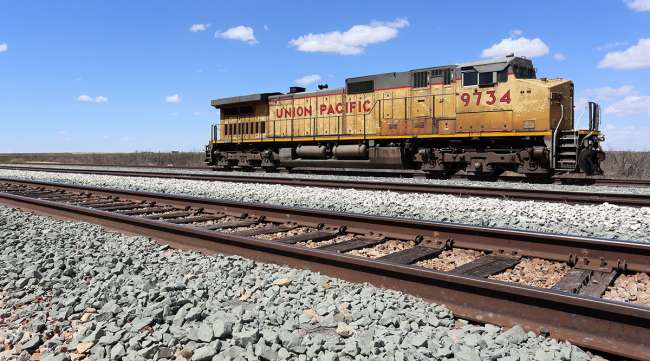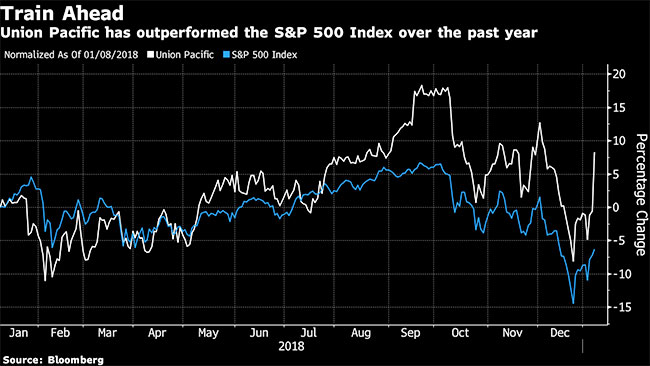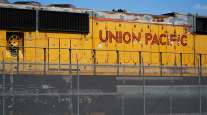New Hire, Performance Strategy Spur Union Pacific’s Resurgence

Union Pacific Corp. surged the most since 2009 after hiring a protege of railroading legend Hunter Harrison to guide the company’s shift to a new efficiency strategy.
Jim Vena, 60, will become chief operating officer Jan. 14 and oversee the implementation of precision scheduled railroading, a system pioneered by Harrison and adopted by Union Pacific late last year. Vena retired in June 2016 after a 40-year career at Canadian National Railway Co., Union Pacific said.
Vena has more than two decades of experience with precision scheduled railroading and more than 10 years working with Harrison, said Allison Landry, an analyst with Credit Suisse Group AG. The strategy, known as PSR, has helped improve profits at four major railroads, including Canadian National, Canadian Pacific Railway Ltd. and most recently CSX Corp.
“This marks yet another milestone in the PSR chronicles at UNP, and puts the company one step closer to full network implementation by mid-2019 — which is now clearly visible,” Landry said in a note Jan. 7. “We think execution risk is diminished.”
Shares rose 9.4% to $151.67 in New York on Jan. 8 after advancing as much as 10% for the biggest intraday gain since April 2009.

‘More Confidence’
Cowen & Co. analyst Jason Seidl raised his recommendation on Union Pacific to buy from hold.
“We believe the company is less vulnerable to having the same level of disruptions that some recent PSR implementations have had, but note that results will likely not begin to meaningfully take hold until second half of 2019,” Seidl said in a note to clients.
The strategy hinges on putting customers on a disciplined schedule for freight pickups and assembling trains in blocks of cars with a common destination to reduce switching. The gain in efficiency allows a railroad to lower the number of cars and locomotives it needs, freeing up capital tied up in rolling stock and unclogging the tracks.
Early Results
The move already is paying off. Union Pacific has removed more than 825 locomotives since August and 20,000 railcars since September, Chief Financial Officer Rob Knight said in a Nov. 29 presentation. The company also slashed the time that railcars sit in a yard waiting to be switched by 18% in the fourth quarter, according to weekly reports published by the Association of American Railroads.
“Vena is a disciple of the late Hunter Harrison’s PSR and could nurture the culture shift and increased employee engagement required to make it work,” said Lee Klaskow, an analyst with Bloomberg Intelligence, in a note Jan. 7. “Vena would be instrumental in identifying UP’s next generation of PSR leaders.”
Even after Harrison’s techniques helped make Canadian National and Canadian Pacific the most efficient railroads in North America, critics questioned whether his methods would work at a U.S. carrier.
New Believers
Harrison turned many skeptics into believers by ramming through changes during a nine-month stint as CEO of CSX before his death in December 2017. Those moves converted an industry laggard into one of the most efficient railroads and powered a 68% stock gain during the past two years, the best among major North American railroads. Union Pacific and Norfolk Southern Corp. adopted precision-scheduled railroading last year.
There are risks to precision railroading. Customer complaints about service disruptions at CSX resulted in regulatory intervention, and the changes faced by employees and shippers can cause tensions.
Union Pacific will be “thoughtful” as changes are made, CEO Lance Fritz said when he announced the adoption of the strategy in September.
Vena will receive a base salary of $600,000 with a potential annual bonus of $750,000. He also was granted $4 million of performance stock and options. The contract is “at-will,” which means Union Pacific can terminate his employment at any time.




